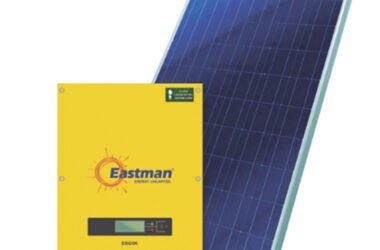The main thing that hinders your forecasting and ultimately your success is a lack of accuracy in your forecasting. This creates uncertainty in the decision-making process for both management and sales, causes resources to be misused, and ultimately destroys trust between management and sales.
It’s not necessarily the strategy or the execution of the sales plan that is causing inaccuracies in forecasting; it is sometimes due to the way data is managed in an organization’s systems for managing their revenue. Many organizations do not have control over the data being used to make forecasts. As such, there are many potential issues within an organization’s data systems that could potentially impact an organization’s ability to produce accurate forecasts. Below are seven common issues that could potentially cause inaccurate forecasts and ways to implement a governance framework to address these issues prior to them becoming a problem.
Via Unsplash
1. The Hidden Problem of Duplicate Leads
Duplicate leads don’t just clutter your CRM. They distort your funnel, inflate your pipeline, and mislead your conversion rates. If two reps are working the same account under different names, forecasting becomes fiction. You might predict more deals than actually exist or misattribute progress to a dead lead.
A governance framework solves this by defining how leads are captured, deduplicated, and enriched across platforms like unique ID enforcement, automatic duplicate detection, and field-standardization rules. Clean pipelines are forecast-friendly pipelines.
2. The Inconsistent Opportunity Stages
The opportunity stages were designed to provide a clear picture of the progress of a sale. However, when teams or reps use opportunity stages differently from others in the organization, the data collected by your forecast model is no longer a reliable source of information. A seller may place an opportunity in the “Negotiation” stage after having a second conversation, while another seller does not move the opportunity to “Negotiation” until legal has reviewed the contract. When this happens consistently, the amount of confidence in the forecast model decreases significantly.
A governance framework provides consistency for opportunity stages by establishing the same standards for all teams and reps. With a consistent use of opportunity stages throughout the entire organization, there is only one version of the truth regarding the status of each opportunity, not multiple versions.
3. The Lack of Visibility to Renewal Data
While many organizations focus on acquiring new customers, many overlook the importance of collecting data on renewal opportunities. Without tying the original deal data to the renewal data, the forecast will exclude a significant portion of future revenue. Additionally, if a CRM system treats renewal opportunities as new business or stores them in separate systems, the organization is operating in a state of partial blindness.
Establishing a governance framework to collect consistent lifecycle tracking for initial deal and subsequent renewals and mapping relevant fields will provide visibility to this missing piece of data.
4. Inconsistent Mapping of Fields Between Systems
Modern Revenue Operations stacks consist of numerous tools. However, when fields such as “Contract Value” or “Close Date” are mapped differently between systems, the potential for inconsistent reporting exists. Reporting based on data from one system may display one value, while reporting from a different system displays a different value. The forecast inherits this inconsistency.
A governance framework includes developing and enforcing a canonical data model across systems. Fields are mapped with a specific intent and validated regularly. Having a single source of truth is more than just an ideal; it is operational.
Via Unsplash
5. Misaligned Definitions Across Departments
Even if your CRM is pristine, definitions can diverge across functions. Marketing may define “SQL” based on engagement score. Sales might expect a meeting to be booked. Finance could rely on a different close probability for recognized revenue. If these signals aren’t harmonized, forecasting becomes a turf war of interpretation.
Governance builds alignment by codifying definitions at the cross-functional level. It pushes beyond departmental silos to create shared terms. When marketing, sales, and finance speak the same data language, your forecast speaks clearly too.
6. The Slow Drift of Stale Data
Your CRM might look full. But how much of it is still alive? Contacts who left, accounts that changed industries, or stages that haven’t updated in months silently degrade your models. Forecasts that rely on outdated assumptions age quickly and miss the mark.
Governance introduces freshness as a standard. Rules get enforced around aging data, decay rates, and refresh cycles. Integrations with enrichment tools become policy, not preference. Stale data gets the boot before it can steer your forecast into the ditch.
7. The Dangerous Comfort of Manual Spreadsheet Fixes
It’s tempting. Just download the forecast, tweak a few cells, and call it a day. But every time forecasts live in spreadsheets, they live outside the system of record. These “off-platform fixes” are invisible to audits, untraceable for learning, and impossible to automate. They undermine the integrity of your entire forecasting operation.
Governance frameworks discourage off-the-record work by building pathways for updates. Whether it’s through approval-based overrides or structured comments, reps and managers can make judgment calls without escaping the CRM. Transparency wins. So does the forecast.
From Traps to Trust: Fixing the Foundation
Every one of these data traps seems small in isolation. But their cumulative impact on forecasting is massive.
What turns the tide is governance. More specifically, applying a flexible but firm data governance in revenue operations strategy. A shared operating model for how data enters, flows, and gets used across your go-to-market teams.
Governance empowers you to spot bad data before it pollutes the pipeline. It creates consensus so teams interpret metrics the same way. It brings automation to cleanup and accountability to updates. Over time, it shifts the question from “Why did our forecast miss?” to “How did we get this right again?”
Final Thought: Forecasting as a Confidence Signal
Accurate forecasts don’t just help you predict revenue. They prove that your business has control of its data, its processes, and its customer understanding. When you eliminate hidden data traps, you’re not just improving forecasts but you are also building trust. Across leadership. Across teams. And with the market.
Governance gives humans a far better foundation to stand on. One where the numbers reflect reality, the signals are reliable, and the strategy stays grounded.
So the next time your forecast misses, look past the spreadsheet. The answer might not be in the model, but in the data feeding it.









